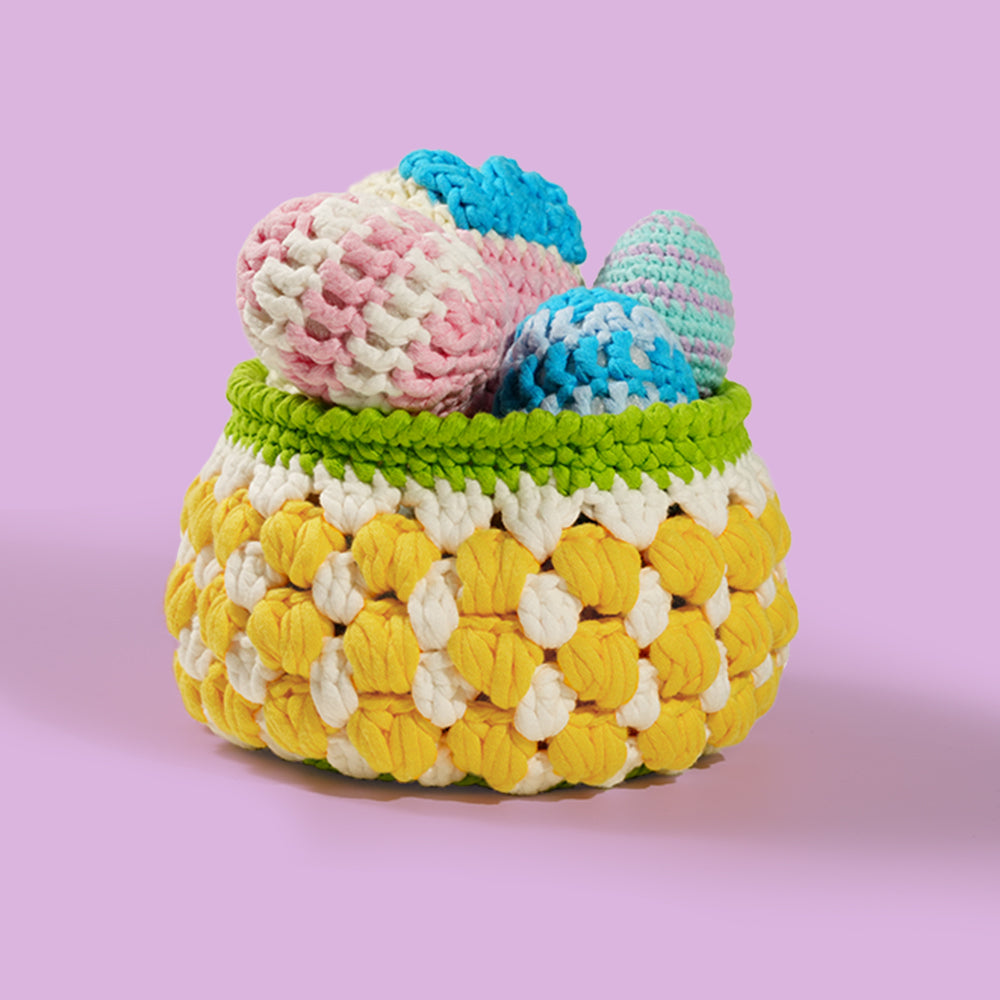Small Hands, Big Hooks: Crochet Tips for Kids and Pre-Teens
Introduction: Tiny Makers, Huge Potential
Think crochet is just for grandmas? Think again. Across the world, more and more kids are picking up yarn and hooks—and loving it. Whether it’s making a bracelet for a best friend, a plushie for their backpack, or just squishing yarn for the fun of it, crochet is a fantastic hands-on activity for creative, curious kids.
And the best part? It’s screen-free, confidence-building, and surprisingly calming. In this post, we’ll explore why crochet is great for children (especially those aged 6–12), what tools and projects work best for small hands, and how to help them fall in love with the craft—without frustration.

Why Crochet Is Great for Kids
Crochet isn’t just cute—it’s powerful. Here’s what it can do for your child:
🧠 Boosts fine motor skills – Holding a hook, controlling yarn tension, and forming stitches help develop finger strength and coordination.
📚 Reinforces math and pattern recognition – Counting stitches, recognizing repeats, and understanding symmetry build early STEM skills.
😌 Supports emotional regulation – The rhythmic nature of crochet can help kids focus, self-soothe, and practice patience.
🎨 Encourages creativity – From choosing colors to inventing characters, crochet offers endless opportunities to create something personal.
And unlike many hobbies, crochet doesn’t require screens, batteries, or a noisy environment. Just a hook, some yarn, and their imagination.
What Age Can Kids Start Crocheting?
Most children can begin learning crochet around age 10–12, depending on their motor skills and attention span. Younger kids may enjoy finger crochet (using just yarn and hands), while older kids can typically use a full crochet hook.
Keep in mind:
-
Children under 10 may benefit from adult supervision during the early stages
-
Start with short sessions (10–15 minutes) to keep things fun
-
Celebrate small wins—like chaining 10 stitches or finishing one mini piece
If you’re not sure where to begin, beginner kits like those from Kynova include everything needed for a low-stress first try, including step-by-step videos that even kids can follow.
Tools That Work for Small Hands
Not all crochet tools are kid-friendly. Here’s what to look for:
✔️ Chunky Yarn
-
Easier to see stitches
-
Less tangling
-
Feels rewarding—projects build up fast
-
Cotton or soft acrylic is best (avoid fuzzy or splitting yarns)
✔️ Larger Hooks (6mm–8mm)
-
Easier to grip
-
Less finger strain
-
Helps make progress visible quickly
✔️ Ergonomic Handles
-
Comfortable for smaller fingers
-
Reduce fatigue and improve control
-
Kynova kits come with soft-grip hooks designed to feel good even for beginners.
✔️ Blunt-Tip Yarn Needles
-
Great for finishing work without poking tiny fingers
Beginner Crochet Projects Perfect for Kids
Want to keep things fun and frustration-free? Try one of these kid-approved starter projects:
🧸 1. Simple Chain Bracelet
-
Teaches the chain stitch
-
Fast success = confidence
-
Add a button or bead for flair
🌼 2. Yarn Flower or Pom-Pom
-
Uses minimal stitches
-
Great introduction to texture and color combinations
-
Can be attached to hair clips or backpacks
🐙 3. Mini Amigurumi Plushie
-
Teaches working in the round
-
Kids love making animals, emojis, or food shapes
-
Kynova’s beginner plush kits come with pre-selected yarn, safety eyes, and clear instructions
📚 4. Leaf or Star Bookmark
-
Simple, flat, and useful
-
A fun project for kids who love books
-
Easy to complete in under an hour
💡 Bonus: Scrap Yarn Creatures
-
Let kids invent their own characters using leftover yarn, felt, and imagination—no perfection required!
Tips for Teaching Kids to Crochet
Teaching kids crochet doesn’t have to be complicated. Here’s what works:
-
Sit side-by-side (not across) – So they can mirror your movements easily.
-
Use visual aids – Kids learn best by seeing. Kynova’s full-length video tutorials are a big help here.
-
Keep it playful – Turn mistakes into silly stories: “That’s a wiggly worm stitch!”
-
Let them pick the colors – The more ownership they feel, the more motivated they’ll be.
-
Celebrate tiny wins – A finished chain? High five. A weird-shaped coaster? Call it “abstract art.”
How Kynova Kits Make Crochet Kid-Friendly
Our crochet kits at Kynova aren’t just beginner-friendly—they’re kid-approved. Each kit is:
✅ Age-appropriate
✅ Easy to follow (even for pre-teens)
✅ Comes with full step-by-step video tutorials
✅ Includes all materials, so no shopping stress for parents
Whether it’s a mini pouch, cute animal keychain, or playful plushie, our kits are designed to help kids succeed without frustration.
They don’t just “learn crochet”—they make something they’re proud of.
Conclusion: Hook Them Early, Watch Them Thrive
Crochet is more than just a craft—it’s a life skill, a self-soothing tool, and a creative outlet rolled into one. When kids learn to crochet, they’re not just making yarn chains. They’re building confidence, coordination, and a connection to their own creativity.
So if you’ve got a curious kid, a crafty niece, or a bored pre-teen looking for a new hobby, hand them a hook and a ball of yarn. Who knows? You might just spark a lifelong love—and they’ll have you to thank for it.
